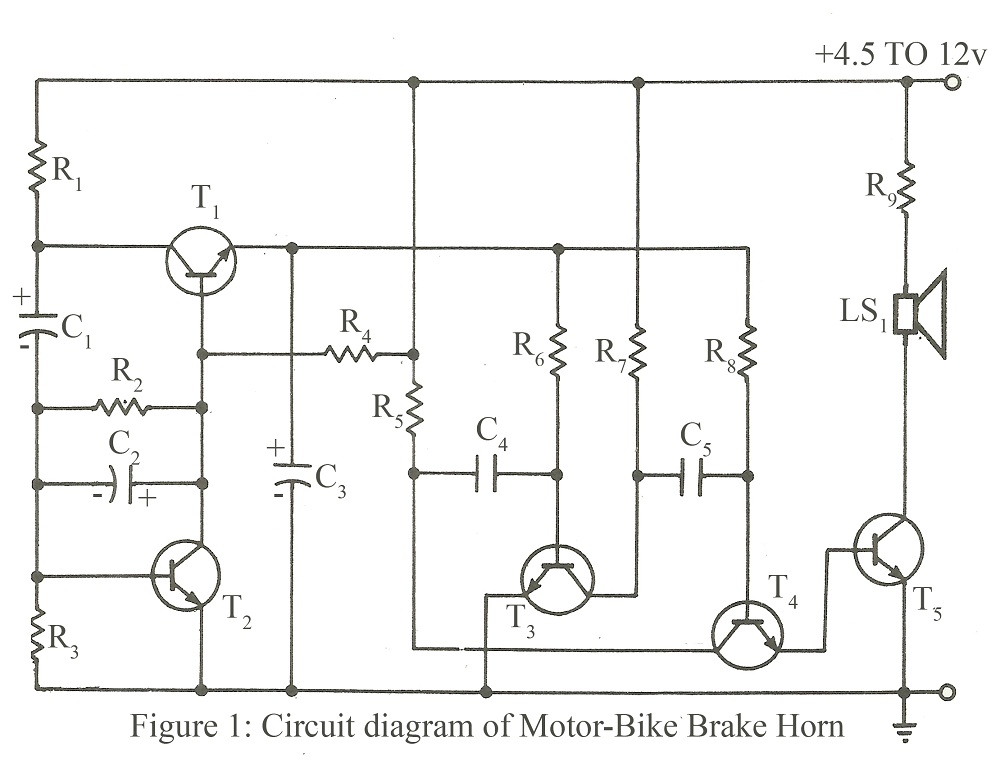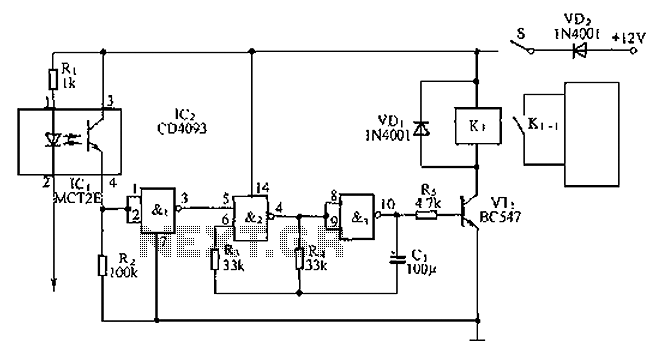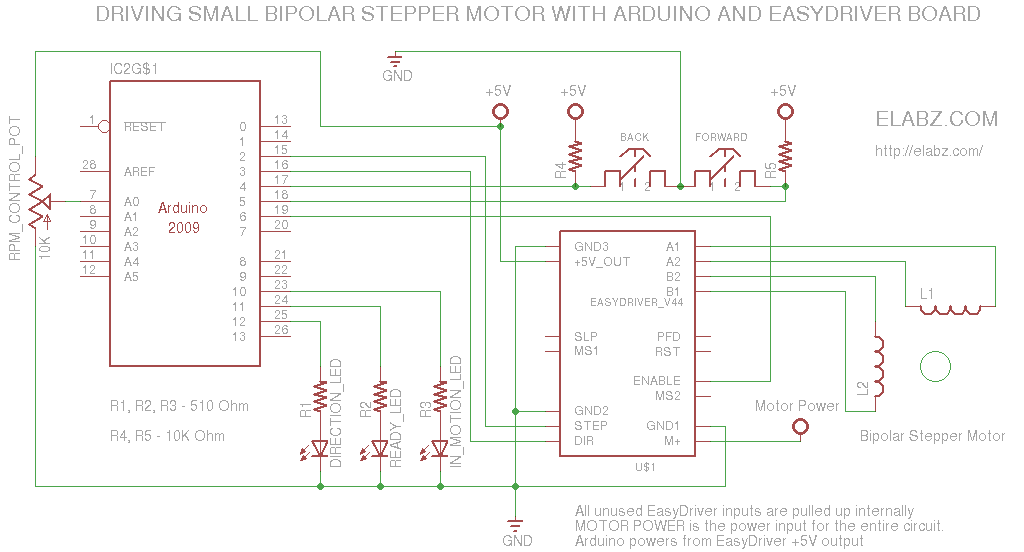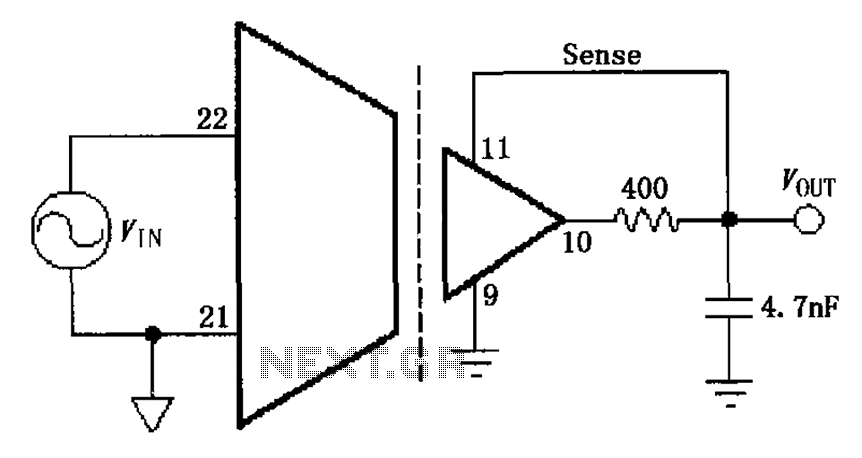
Motor Bike Brake Horn Diagram

The circuit is designed to operate within a voltage range of 4.5V to 12V DC, or it can be directly connected to the brake point of a motorcycle. Resistor R7 should be replaced with a 1-ohm, 1/2W resistor when using an 8-ohm speaker. T5 functions as a driver transistor. The polarity of capacitor C3 can be reversed to achieve an abrupt shutdown of the circuit.
The described circuit operates effectively within a specified voltage range, allowing for flexibility in power supply options. When integrating this circuit into a motorcycle system, it is essential to ensure that the connection to the brake point is secure and reliable, as this will influence the circuit's performance during operation.
Resistor R7 plays a crucial role in the circuit's functionality, particularly when interfacing with an 8-ohm speaker. Replacing R7 with a 1-ohm, 1/2W resistor is necessary to match the impedance and ensure optimal power transfer, thereby preventing distortion and potential damage to the speaker.
The transistor T5 serves as a driver, amplifying the control signal to drive the load effectively. It is important to select a transistor with appropriate specifications to handle the current and voltage levels present in the circuit to avoid thermal issues or failure.
Capacitor C3's ability to have its polarity reversed introduces a unique feature to the circuit, allowing for a quick disconnection of the power supply. This functionality can be particularly useful in situations where immediate circuit shutdown is required, such as in emergency braking scenarios. However, care must be taken to ensure that the capacitor is rated for the voltages in use and that the reversed polarity does not exceed its specifications, which could lead to capacitor failure.
Overall, the circuit design emphasizes adaptability and safety, making it suitable for integration into automotive applications, particularly in motorcycle systems. Proper component selection and adherence to the specified configurations are critical for achieving the desired performance and reliability.The circuit can be operated from 4. 5V to 12V DC or direct from the brake point of the motor-bike, Resistor R7 should be replaced with 1-ohm. 1/2W in case of an 8-ohm speaker. T5 is a driver transistor. C3 polarity can be reversed for a sudden off of the circuit. 🔗 External reference
The described circuit operates effectively within a specified voltage range, allowing for flexibility in power supply options. When integrating this circuit into a motorcycle system, it is essential to ensure that the connection to the brake point is secure and reliable, as this will influence the circuit's performance during operation.
Resistor R7 plays a crucial role in the circuit's functionality, particularly when interfacing with an 8-ohm speaker. Replacing R7 with a 1-ohm, 1/2W resistor is necessary to match the impedance and ensure optimal power transfer, thereby preventing distortion and potential damage to the speaker.
The transistor T5 serves as a driver, amplifying the control signal to drive the load effectively. It is important to select a transistor with appropriate specifications to handle the current and voltage levels present in the circuit to avoid thermal issues or failure.
Capacitor C3's ability to have its polarity reversed introduces a unique feature to the circuit, allowing for a quick disconnection of the power supply. This functionality can be particularly useful in situations where immediate circuit shutdown is required, such as in emergency braking scenarios. However, care must be taken to ensure that the capacitor is rated for the voltages in use and that the reversed polarity does not exceed its specifications, which could lead to capacitor failure.
Overall, the circuit design emphasizes adaptability and safety, making it suitable for integration into automotive applications, particularly in motorcycle systems. Proper component selection and adherence to the specified configurations are critical for achieving the desired performance and reliability.The circuit can be operated from 4. 5V to 12V DC or direct from the brake point of the motor-bike, Resistor R7 should be replaced with 1-ohm. 1/2W in case of an 8-ohm speaker. T5 is a driver transistor. C3 polarity can be reversed for a sudden off of the circuit. 🔗 External reference





